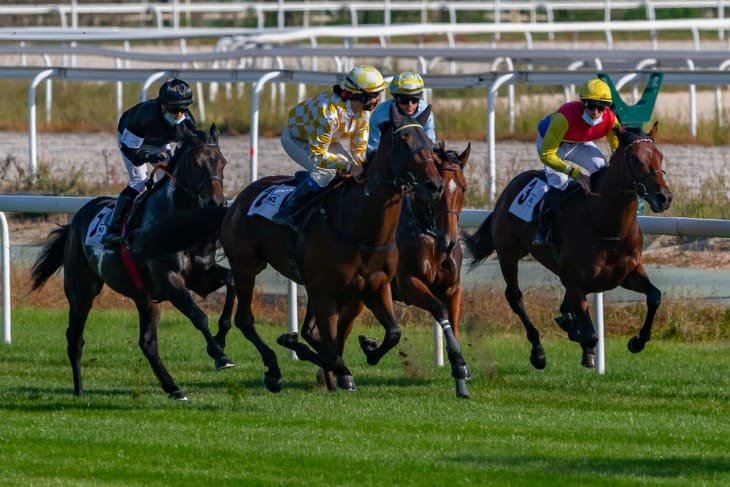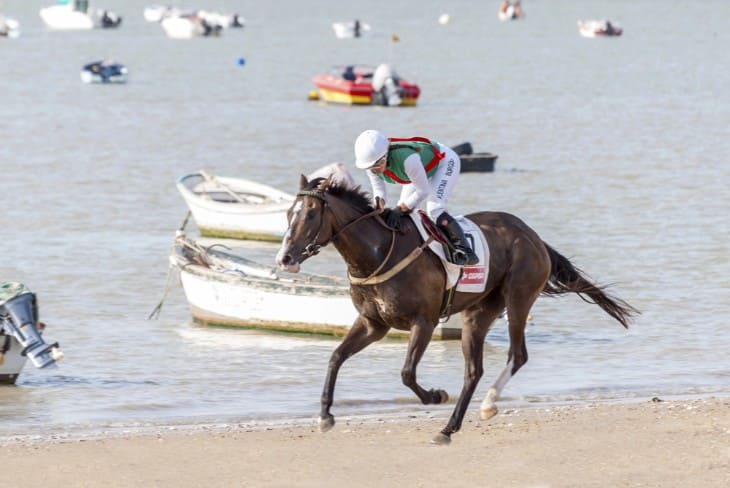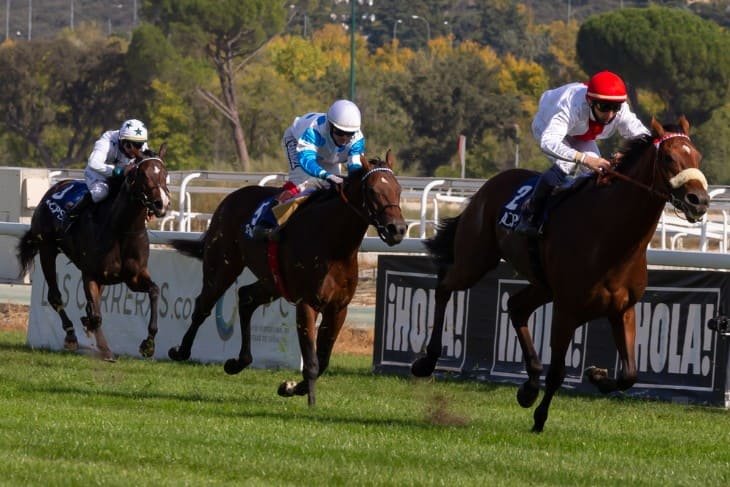With horse racing, we are captivated by the excitement of the race itself, the noise made by the crowd and the anticipation of having a winner. However, an underlying aspect shapes a day's racing: ''the going''. This term refers to the condition of the surface on which horses run during a race meeting, and it can affect anything from how well a horse performs to the trainer's decisions and those who bet.
Knowing about ''Going''
In horse racing, "going" means the track's state on race day, i.e., whether it is hard or soft, etc. This is important because horses can only run so fast depending on how good the ground is beneath them. It also significantly affects their performance level. The states range from hard—indicating substantial ground—to heavy, which describes soft or muddy conditions, with each one affecting speed and safety.
When dry, a track gets more challenging due to sunshine, while rain sometimes makes it softer or even muddy. Workers do everything possible to ensure fairness regardless of weather conditions; they use machines like rollers that flatten out any bumps on the surface, thereby making it safe for all competitors.
The ''going'' helps everybody involved in racing, including trainers, jockeys, and bettors. The former choose races based on their horses' abilities, while jockeys also plan tactics according to this factor. It may seem straightforward, but it has huge implications for any event.
Horse Abilities and Track Preferences
Just like athletes have favourite stadiums where they perform best, horses prefer certain surfaces over others when competing in races. They base these choices upon factors such as body structure vis-à-vis hoof shape, etcetera. Depending upon various physical attributes, some animals would instead run on more challenging tracks than others; for example, those with robust legs are likely to succeed more often than not when running in such conditions since firm grounds enable them to utilise their power by running faster.
Nonetheless, soft or muddy tracks have proven conducive environments for specific steeds. Horses designed for this terrain usually possess broader hooves, which provide better traction on slippery surfaces, preventing excessive sliding that could result in deceleration or accidents.
Trainers must understand what types of races suit particular horses best by studying their past performances on different tracks. For instance, a trainer who knows that his horse always thrives on the hard ground would be unwise to enter a race where heavy rainfall has made the going soft because such a move does not play into its strengths. Instead, he should choose another event with firmer conditions to give his charge maximum chances of winning.
Those who gamble on horse races can also benefit from this knowledge. For instance, if a person is aware that a horse performs excellently on a particular track type, they may have more faith in betting for it under similar conditions. Consequently, it is significant to appreciate the preferences and capabilities of horses among trainers or jockeys and aid betters in making wiser decisions.

Safety Concerns
- Risk of injury on tracks: Hard tracks can be harsh on horses. With a less cushiony surface, their hooves are prone to damage. As a result, such injuries as joint pain or even fractures may occur. When the ground is substantial, whenever their hooves strike the earth, it is like they are hitting concrete each time, which could also be so challenging for them since that might cause grave damage to their legs too. Workers at racecourses try to ensure safety standards are met, but trainers and jockeys should still exercise caution.
- Slips and falls on tracks: Things change on soft or muddy tracks; there is an increased risk of slipping off balance, among other things associated with these conditions. This is particularly true of highly soft surfaces where horses' hoofs sink into the mud, causing them to slip or trip over more quickly than usual. This not only endangers the life of a rider who might be aboard but also puts at risk all those around. This means everyone participating has to take extra care while riding through such areas.
- Making adjustments for safety: To mitigate these risks, trainers make certain modifications alongside staff members who work within the racecourse premises to minimise chances of accidents happening here due to the nature of this sport being conducted most times outdoors throughout year-round without any form sheltering against natural elements like rain etc., thus exposing participants directly towards harsh weathers experienced during various seasons including the winter season.
Rules should be followed accordingly because they provide safety guidelines, which we need in our lives, especially when dealing with dangerous activities such as horse racing.
Impact on Race Strategy
The word ''going'' refers to the underfoot condition and has an excellent bearing on how horses run, affecting race strategies employed by trainers and jockeys. Trainers must always think twice before deciding what approach would work well, considering the track conditions. For instance, if going is soft and muddy, a jockey may guide their mount towards outside lanes, which might have needed to be churned up more, providing better grip for the horse's hooves. This will enable such animals to maintain good speed without slipping.
On the other hand, if the going is hard and fast, then the strategy could be quite different because jockeys usually try keeping their mounts near the inside rail, which tends to be quick due to the shorter distance around the course. Plus, the ground may be less worn out, thus affording a solid surface from which horses can push off.
The equipment also plays a part in race strategy, whereby, depending on ''the going'', trainers can change the type of shoes worn by horses to match track conditions; for example, during dry spells, lighter shoes are used that aid faster movement, while in wet weather, those with better grip are selected to prevent sliding off.
All these options are made to increase the horse's chances of winning by giving it the best possible opportunity to achieve victory. However, in a safe environment, the trainer has to work on his/her tactics, basing them on the place's condition, as it greatly affects all aspects of performance, including the physical and mental capabilities displayed throughout the event.
Betting Implications
The ground on which the race is run—or the "going"—is a significant factor in betting on horse racing. It can help bettors make wiser decisions by determining whether a track is hard, soft, or somewhere in between. Every horse has its preferred track type, and if a punter knows this, it can work to their advantage.
For instance, when considering whether to place a wager on a particular horse, if it has been raining and there are signs that the going might be soft, one would feel more confident about backing such a selection; conversely, should these conditions prevail but any animal's record shows that they struggle on this sort of surface(s), then punters may opt out of supporting them.
"Experienced gamblers always check" Going " before they put down their money. They also looked at previous races where similar conditions were met to see how different horses performed. You don't want just fast horses; you want those who will run best at today's track.
In addition, sudden weather changes can also affect betting decisions: suppose right before a race starts, it begins drizzling heavily, causing ground conditions to change from good to yielding, whereby some bettors might change their minds about what bets they want to make, thus leading to last-minute choices that could either result into huge profits or losses.
Knowing track conditions and how they affect various animals are crucial for success in horse racing gambling; otherwise, betting becomes pure luck without any strategy. Such awareness increases the chances of making correct guesses; hence, more knowledgeable predictions will likely yield higher returns.

Trainer Decisions and Horse Care
- Choosing Right Races: For trainers, deciding which races their charges should enter is part of their duties. These professionals consider factors like ''going'' because matching up horses' strengths with suitable conditions can increase the probability of better performance. If there's been rain or naturally soft courses, then races run after such days, which will be considered by a trainer whose horse thrives well on those grounds. These are usually referred to as strategic selection, aiming at giving it the best chance of doing so.
- Modifying Training Regimes: Trainers may alter their runners' training routines depending on anticipated ground conditions at forthcoming meetings. In challenging track races looming, speed work on similar surfaces could form part of preparations to make them more comfortable with this type of footing. In other instances, softness being expected might necessitate building stamina and strength to cope with higher demands posed by such environments during exercises.
- Horse Care And Equipment: "Going" also influences the care given to horses and the equipment used by trainers. This might involve selecting appropriate shoes that offer better grip or shield hooves against different kinds of tracks. Moreover, it may call for changes in care routines to ensure comfort and healthiness, which could mean using alternative grooming methods or adjusting diet according to energy levels required when racing under various ground conditions.
These decisions by a handler can significantly affect an animal's welfare and performance; therefore, considering track conditions is vital since failure to do so would not only be detrimental but also amount towards neglecting one's duties, thus putting lives at risk.
Trainers must implement various management strategies to ensure that their horses are prepared to compete and safeguarded against the dangers of differing ground conditions.
Historical and Cultural Significance
The history of horse racing is inseparable from the concept of ''going''. Racecourses have become known for certain conditions over time, which has affected how horses are bred and trained there. Trainers in regions where the track often gets muddy, for instance, breed and train horses that perform well under such circumstances.
This element also epitomises adaptability throughout many years in training techniques and breeding methods, among other things, regarding thoroughbreds. Trainers have always been able to study their environment to adequately prepare their racers for challenges unique to them by being near a given course. Therefore, racing has improved, and an even stronger bond between communities around tracks has been fostered.
Furthermore, races whose "going" tends to be difficult, like those held on heavy tracks, are usually viewed as tests for true ability and stamina in horses. Winning a race of this kind is considered quite an achievement; thus, these events attract large crowds who celebrate them greatly, thus showing the societal implications inherent in horse racing.
In light of this, it is clear that apart from determining how races should be conducted, the ''going'' adds up to being among the factors that have created excitement around horse racing worldwide. Trainers must recognize or undervalue such a thing because jockeys, too, take note of its significance.
At the same time, fans appreciate races run under varied conditions more, thereby making horse racing not just any sport but one reflecting regional pride and identity. Understanding this component's impact helps us realise further complexity plus beauty associated with equestrian sports.
In Summary
''Going'' is indeed an essential part without which no single aspect would survive within the equine events industry at large since every area relies heavily upon its input towards success realisation right from safety measures taken up during competitions through performance enhancement all way down betting systems until fanatical appreciation grows among supporters who may be professional punters or simply lovers of horses attending races occasionally.







